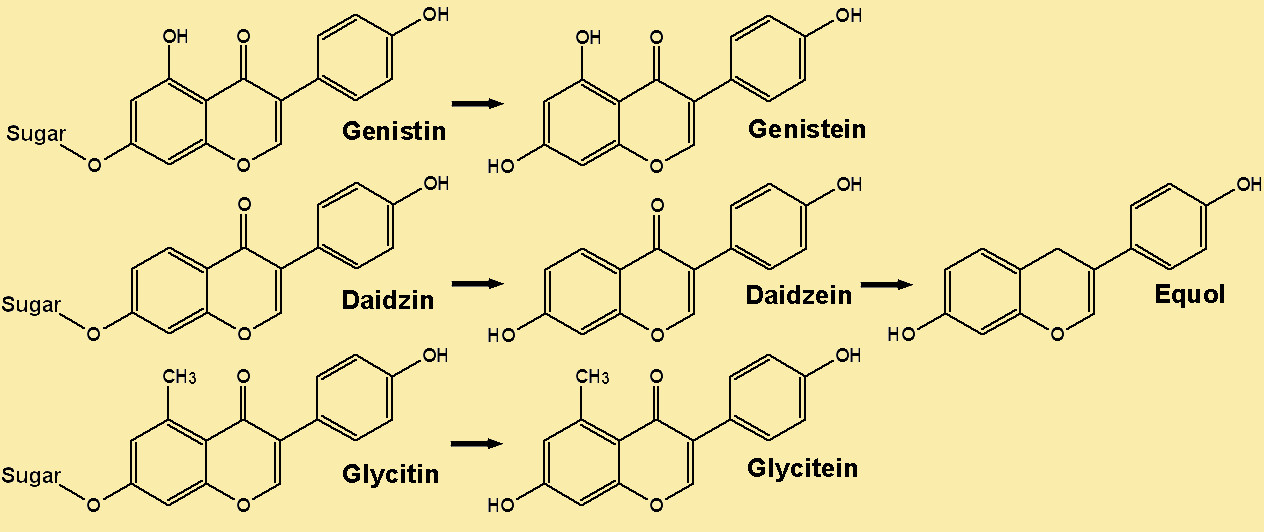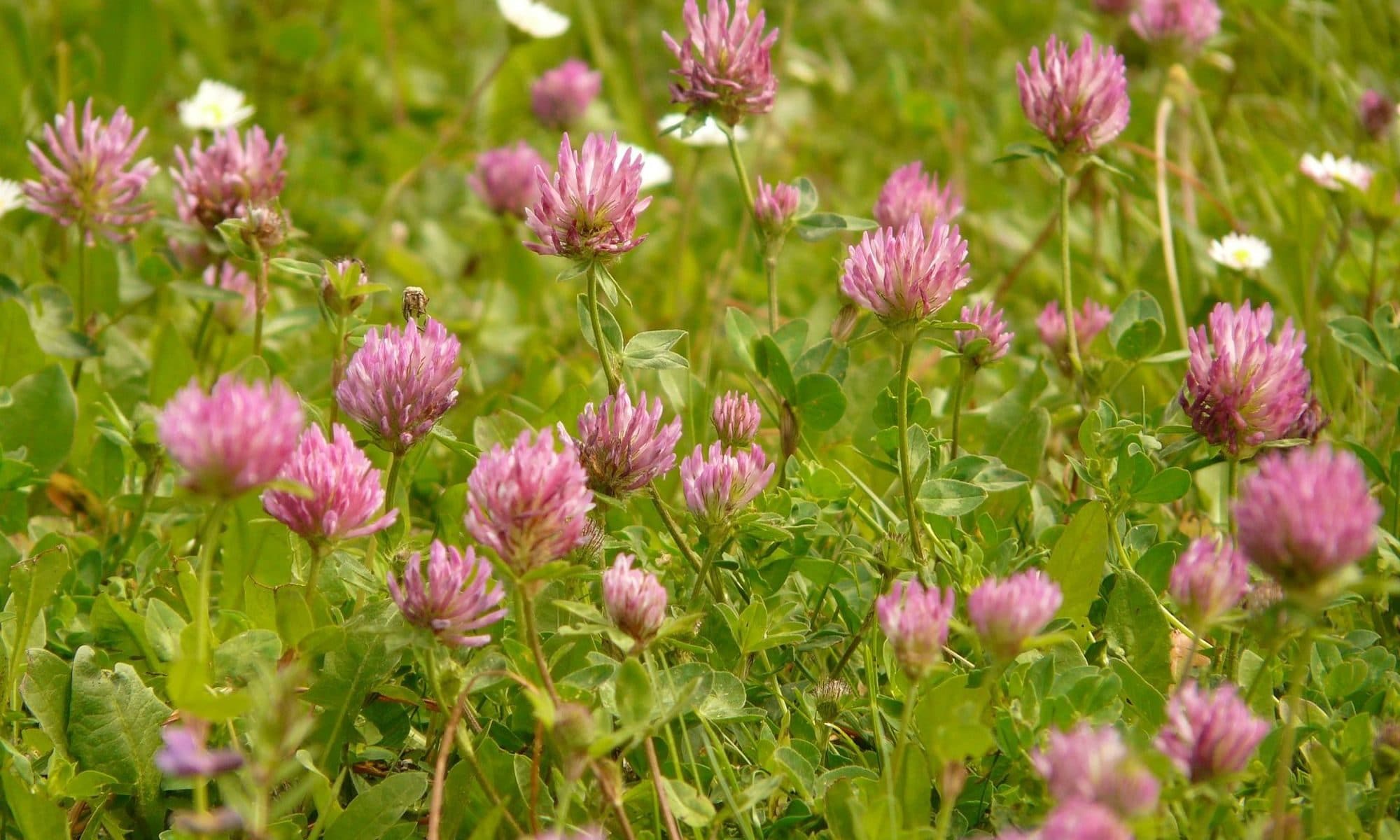Isoflavones occur in foods in the form of water soluble glucosides (daidzein, genistin and glicitin), which means that they are bound to sugar. These glucosides have to undergo further changes before they can become biologically active. They must first undergo hydrolysis by bacterial beta-glucosidases in our intestine, releasing the corresponding bioactive aglycones (daidzein, genistein and glycitein). Aglycones are rapidly and efficiently absorbed by our body, reaching a peak plasma level about 5 hours after consumption. They can be further metabolized to other bioactive metabolites such as equol. This is relevant because the potency of equol is higher than that of daidzein. Only 30% of the population can convert daidzein into equol and are called equol producers.

Influence of diet on isoflavones metabolism
Your intestinal flora has an effect on the metabolism of isoflavones. When your intestinal flora is low, for example when you take antibiotics, metabolism falls down. Transformation of daidzein into equol is also strongly influenced by your diet. A high carbohydrate environment, which causes increased intestinal fermentation, results in more equol production. When dietary intake of fat is high, intestinal flora has difficulty in synthesizing equol from isoflavones.
Like endogenous estrogens (estradiol), isoflavones are metabolized in the intestines and liver. Absorption of isoflavones happens along the entire length of the intestine and they are secreted in bile and urine. Excretion of isoflavones metabolites can vary strongly between individuals. This may be influenced by the fact that each person has his own specific intestinal flora population.
More literature about isoflavones metabolism
Absorption in humans of isoflavones from soy and red clover is similar. J Nutr 2002 Aug;132(8):2199-201
Isoflavones and Functional Foods Alter the Dominant Intestinal Microbiota in Postmenopausal Women. Journal of Nutrition 135:2786-2792, December 2005
Factors Affecting the Bioavailability of Soy Isoflavones in Humans after Ingestion of Physiologically Relevant Levels from Different Soy Foods. J. Nutr. 136:45-51, January 2006
Bioavailability of Isoflavones after Ingestion of Soy Beverages in Healthy Adults. J. Nutr. 136:2291-2296, September 2006
Method of defining equol-producer status and its frequency among vegetarians. J Nutr. 2006 Aug;136(8):2188-93
